

Age: unknown
Sex: male
Date: 6 Jun 1946
Place: Newton Street, Burton-on-Trent
Brinley Booth was beaten over the head whilst following a man pushing a safe in a push-chair stolen from a cinema and later died.
A burglar or burglars had stolen a safe from the cinema and was taking it away down a street in a push chair when Brinley Booth saw him whilst on patrol and chased but he was hit on the head with a jemmy and later died in hospital.
There was not enough evidence to charge the main suspect, a coloured soldier from Louisiana, United States, even when he was arrested and confessed to being involved with the crime ten years later. However, he was a US army deserter and was arrested upon being acquitted of the murder, and charged and convicted of desertion by the US authorities and sentenced to twenty years in the US.
Brinley Booth had been on patrol duty in Burton-on-Trent in the early hours of Wednesday 29 May 1946 when he saw the man with the safe going along the street. Brinley Booth then endeavoured to effect the arrest of the man and was struck during the struggle with an instrument which was thought to have been a jemmy and the man escaped. The instrument had penetrated the left front of Brinley Booth's uniform cap and fractured his skull. He was taken to the local infirmary where an x-ray was taken which revealed that he had a severe fracture of the skull. He was later taken to the Derby Royal Infirmary on 2 June 1946 where an operation was performed, but he didn't recover, and he died at 5.43pm on 6 June 1946.
It was thought that Brinley Booth had been patrolling Moor Street at about 3.30am when he had seen a man wheeling a push-chair, with a stolen safe on it, approaching him from about 50 yards away. The man with the push-chair then turned to his right out of Moor Street and into Alfred Street and Brinley Booth then ran after him in that direction and then saw the man a short distance ahead in Alfred Street.
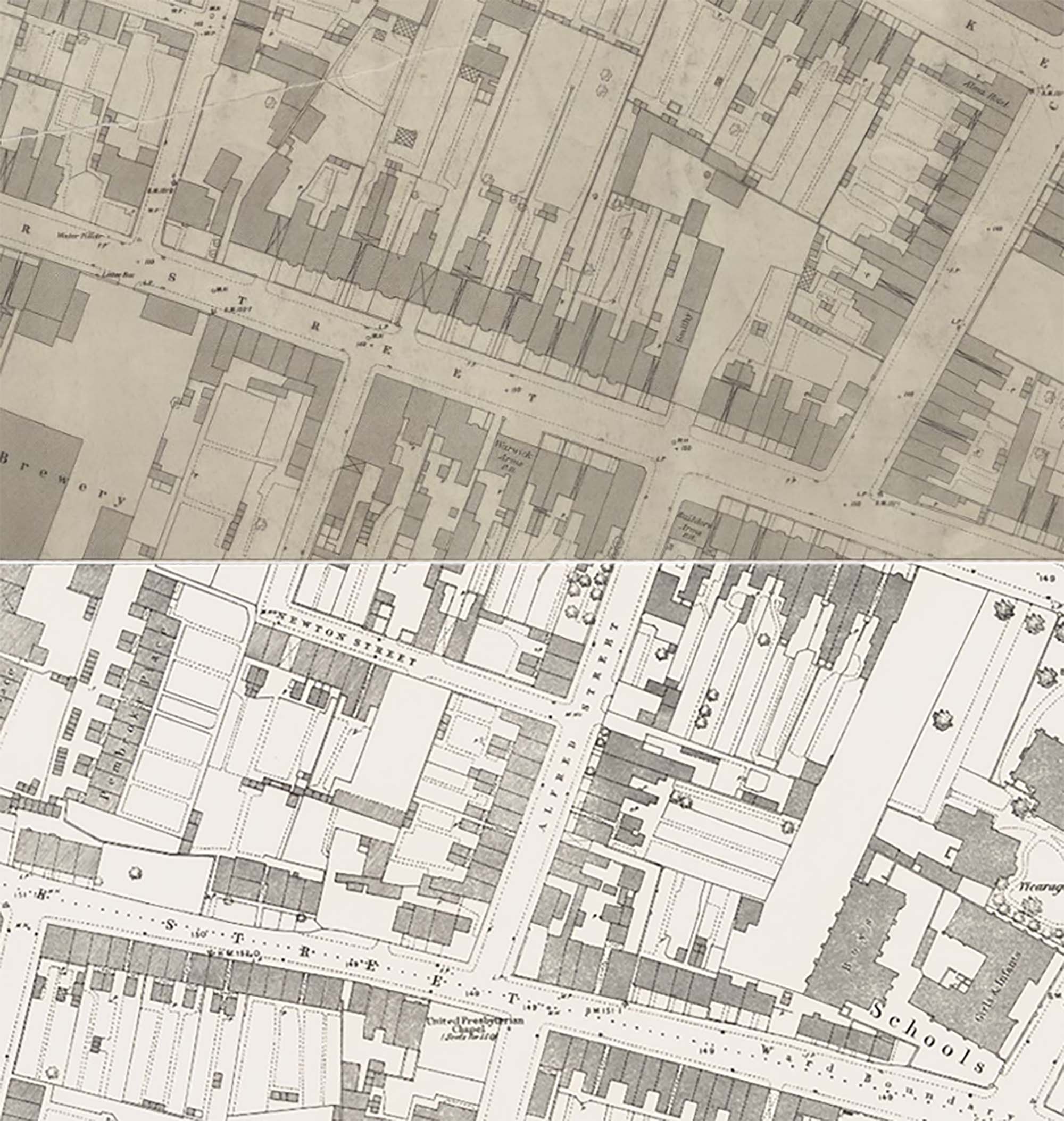
The man then abandoned the push-chair and safe and ran along Alfred Street, followed by Brinley Booth, and then after running along Alfred Street for about 50 yards, the man turned right into Newton Street, which was a street with a right angle turn that led back again to Moor Street. At that time the man was a short distance in front of Brinley Booth and after taking the right angle turn into Newton Street, he apparently stopped and waited, and as Brinley Booth turned the corner, he struck him on the head.
After Brinley Booth regained sufficient strength, he followed the man towards Moor Street and then knocked up a man who lived over a shop at the junction of Moor Street and Alfred Street. The man then came out of his house and found Brinley Booth near the safe and push-chair, which were lying on the pavement inside Alfred Street. Brinley Booth was at that time in a state of collapse but managed to ask the man to telephone the police which he did.
A few minutes after, another man that had lived at 22 Alfred Street, who had been out of bed, came out. He said that he had heard noises in the street and heard Brinley Booth knocking at the man's door and so he had gone outside to see what was wrong.

When the police station was informed of the situation a night duty sergeant immediately visited the scene and found Brinley Booth and then made a search of the locality. Other police officers were called, and Brinley Booth was then taken to Burton-on-Trent Infirmary.
At that time Brinley Booth was conscious and was able to reply to questions and a statement was taken from him, but it wasn't signed.
In his statement, Brinley Booth described his assailant as a man, aged about 35 years, between 5ft 10in and 6ft tall, and with fair bushy hair. It was noted that at that time, no one, not even the doctors at the infirmary, appreciated how seriously Brinley Booth was injured and a great deal of reliance was placed upon his description of the offender. However, when the real extent of the injuries to Brinley Booth 's brain was subsequently learned, it was said that it at once became apparent that his statement could not be relied upon.
After Brinley Booth was taken to the infirmary, the safe and push-chair were photographed and then removed.
At the time of the attack dawn was just breaking and when the light was sufficient for the purpose, it was possible to trace wheel tracks made by the push-chair at intervals towards Curzon Street and when a lock-up property was examined in that vicinity it was found that the Picturedrome Cinema in Curzon Street had been broken into and that the safe was missing from there. The distance from Curzon Street to where the attack was made on Brinley Booth was 1,280 yards.
On the inside of the pay-box window at the cinema, finger prints were found that were believed to have been made by the person that had broken into the premises as there was evidence that the ticket machine had been interfered with and that the prints were in the position that one would expect if an intruder had reached through the window to interfere with the ticket machine, which could have been mistaken for a cash register.
From thereon, all available police officers were detailed to enquire into the crime, and experienced detective officers from all parts of the country were called in.
It was thought that the solution to the crime rested on the identification of the push-chair that had been abandoned by the man, which was thought suggested a local connection and searching enquiries were made in efforts to establish its ownership. A description and a photograph of the push-chair was widely published in the local press and slides were shown on cinema screens, but no-one came forward to give information. The push-chair was also taken to all local schools, but still without success.
When all other methods failed, the police used a loudspeaker on a patrol car and patrolled each street in the town and spoke to residents and asked them to examine the chair which was being pushed along the street by a police officer. It was noted that if the occupants of houses did not come out to look at the chair, their doors were knocked on and they were requested to do so. However, the owner of the chair was still not identified, and no useful information was forthcoming that was likely to lead to identification.
It was reported that general police enquiries into the crime were pursued night and day and local suspects likely to commit that class of offence there interrogated, but no one was connected with the crime.
However, the police did trace a witness who had seen a man with a push-chair going towards the cinema at 3.05am on the morning of the murder, but he was only able to say that the push-chair was at that time empty and that it was being pushed by a fairly tall man.
Another man was also traced who said that at about 3.30am he had seen the man with the push-chair and the safe coming from the direction of the cinema towards the spot where Brinley Booth was attacked. However, the man said that although he saw the man leaning over the push-chair, he could not describe him other than to say that he appeared tallish.
Five minutes later, two other witnesses said that they saw the push-chair with the safe on it about 400 yards from where Brinley Booth was attacked, but said that they didn't see anyone with it.
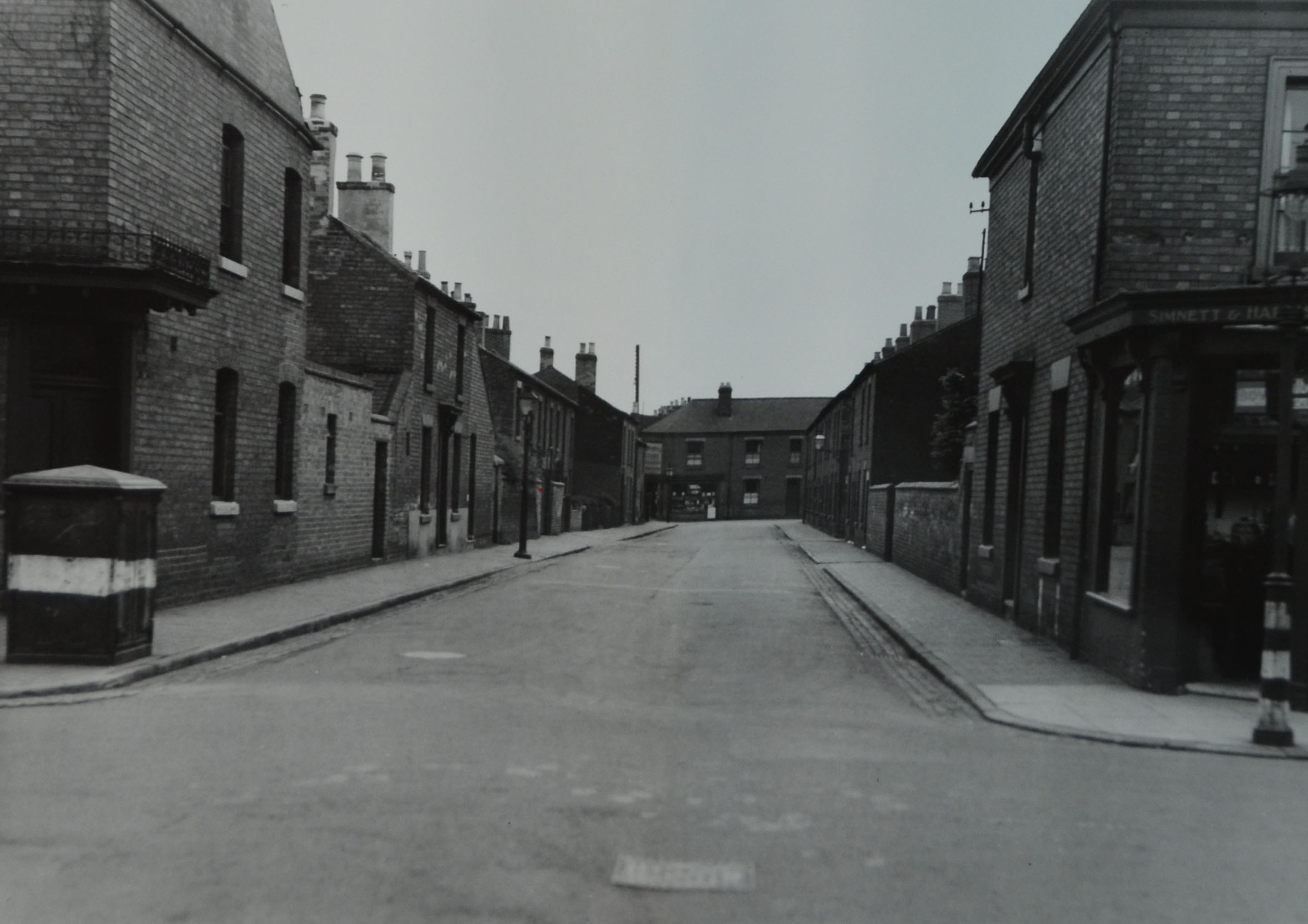
About ten minutes after Brinley Booth was attacked, a cyclist saw a man in Fleet Street, about 750 yards from the scene of the attack, walking in a direction away from the scene and towards a foot bridge known as Ferry Bridge over the River Trent. He had a lighted lamp at the front of his cycle and said that when the man saw his light he started to run and he lost sight of him. He said that he apparently dodged into an entry off Fleet Street. The cyclist said that he continued his journey, which took him across the bridge over the River Trent, and that whilst he was on the bridge he was overtaken by a coloured man who was running quickly towards Stapenhill, which was going away from the crime and going towards Heath Road. He said that when the coloured man passed him, he kept his head down and was running quickly. The cyclist noted that the coloured man was wearing soft-soled shoes.
The cyclist was followed over the bridge by another cyclist who said that when he reached the bridge, he saw a tall man in front of him, but didn't see his face. He said that as he reached the bridge, he dismounted his bicycle and said that the noise must have startled the man in front of him as he immediately commenced to run across the bridge towards Stapenhill. The second cyclist noted that the man made no noise as he ran.
The police report noted that the coloured man seen by both cyclists at the bridge was definitely the same man as no one else could have been on the bridge between the two witnesses and that in the light of what was later known, that it was evident that the man that the first cyclist had seen in Fleet Street had waited until he had started to cross the bridge before following silently behind, but that he did not realise that there was a second cyclists coming up behind the first and that upon finding that he was caught on the bridge between the two cyclists he elected to run ahead and pass the first cyclist who said that he saw the coloured man pass him on the bridge.
The first cyclist said that after the coloured man passed him near the end of the bridge, he saw him jump over a fence into the garden of a house. The first cyclist then waited for the second cyclist and when he joined him, they both heard dogs barking at the house.
The woman who lived in the house said that she was not sure of the time, but that she remembered in the early morning of 29 May 1946, she was awakened by her dogs barking and heard someone outside who she thought had a bicycle, which the police report noted was probably one of the two cyclists that had crossed the bridge and seen the coloured man jump over her fence. She also said that at 9am the following morning that she found a right felt slipper in her garden.
Later, during a search on 6 June 1946 a policeman found the fellow slipper to the one found by the woman from the house in a field to the rear of her house.
As such, the police report stated that from the information given by the two cyclists that it seemed likely that the coloured man might have been connected with the crime. It was noted that during the war, many US coloured units had been stationed in the town and that it was not unusual for some of the men to visit friends there after they had been transferred to other parts of the country. The police report also noted that they also realised that many US coloured soldiers were absent without leave and were frequently harboured by women of loose morals.
The police report stated that with those facts in mind, police officers made enquiries concentrated on premises known to have been frequented by coloured troops, and during their enquiries interviewed a woman at 194 Heath Road in Stapenhill, Burton-on-Trent at about 3pm on Friday 7 June 1946. The police said that they told her during an interview that they were trying to trace a coloured man who had been seen running over the Ferry Bridge during the early hours of 29 May 1946 and she made a detailed statement regarding her association with coloured men in which she said that no coloured men had been to her house in the previous five or six weeks. However, the police noted that during their other enquiries they received information that a coloured man had been seen at her house more recently than five or six weeks.
The woman was 30-years-old and had two children. Her husband had been killed on active service during the war. The police report stated that it was known that she had associated with coloured troops.
It was also noted that the direction that the coloured man seen running over the bridge by the two cyclists would have taken him towards 194 Heath Road, and concluded that in the light of the information available that it seemed that he could have been making for that address.
As such, the police went back to see the woman at 194 Heath Road on Friday 7 June 1946. The coloured man was not there, and the woman repeated the substance of the statement that she had previously made to a police sergeant to the effect that she did know some coloured men but that none had visited her for about six weeks.
The police said that they told the woman that they were making enquiries into the murder of Brinley Booth who had been killed whilst attempting to arrest a man who had broken into the Picturedrome Cinema and said that she replied, 'I know all about it, I've seen it in the local paper'. The police said that when they told her that a coloured man had been seen running from the Ferry Bridge towards her house, she replied, 'He might have been but he didn't come here'. When the police then asked the woman if she could help them in their efforts to find the owner of the push-chair which had been left behind by the murderer, she said, 'I can't. I've seen it up the street with the loudspeaker car. I used to have one like it, but I threw it away about six months ago'.
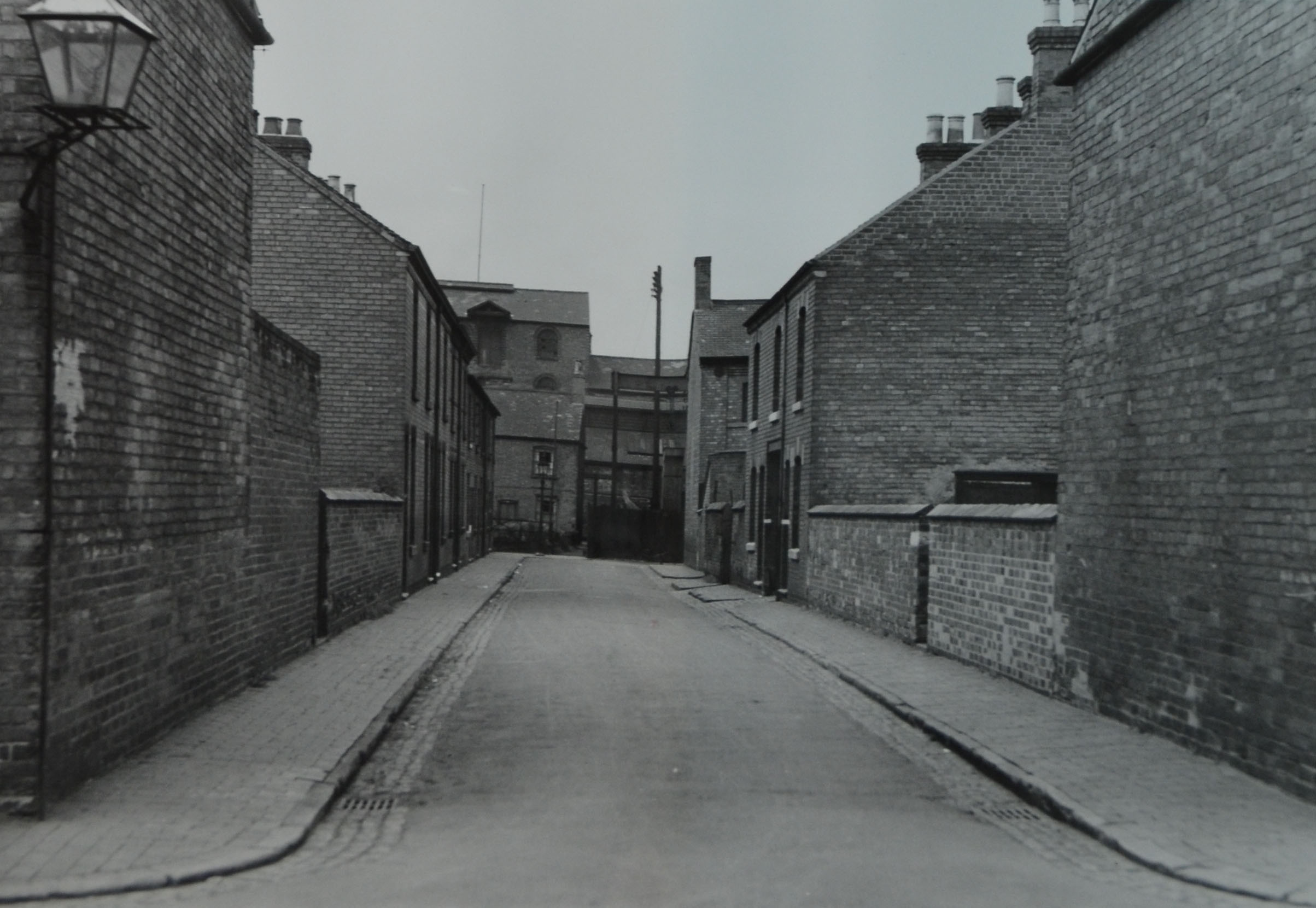
The police said that from the demeanour of the woman that they suspected that she was at least withholding some information and so at their request they went to the Burton-on-Trent police station where they showed her a picture of the push-chair and said that she then commenced to cry. The police said that they then asked her again if she could tell them anything about the push-chair, and she then said, 'It's mine. I'm sorry I didn't tell you the truth at first'.
The police said that they then told the woman that she was in a rather serious position and cautioned her and she said, 'I want to tell the truth'. She then made a statement and signed it.
The general direction of the statement was that the coloured man had visited her on Tuesday 28 May 1946 and had left at about dusk, and then come back again at about 1.30am the next morning and borrowed the push-chair. She said that he was wearing a pair of slippers and that when he returned to her house at about 4am, which was noted as being about half-an-hour after the attack on Brinley Booth, he was bare-footed. She said that she asked him some questions about where he had been and said that he told her that he had had to 'run for it' and that he had left the push-chair and had hit a policeman. She later identified the slippers found by the police as belonging to the coloured man that had borrowed the push-chair.
It was noted that the woman said that the last time that she saw the coloured man was after the commission of the offence, but before Brinley Booth had died. She added that the coloured soldier had said to her before he left, 'I hope to God nothing happens to the policeman. I didn't mean to do anything like that'.
It was noted that on 4 June 1946, three days before the woman made her statement, that she had been called into the street to see the push-chair when it was being taken around by the police with the loud-speaker on the car, but that when she was asked by a detective if she could give any information about the chair, she shook her head in the negative. It was further noted that she later admitted that the coloured man had actually been in her house with her at the time.
The police further stated that they thought that the woman had known full well what the coloured man had taken the push-chair out for on the night of 29 May 1946, noting that they had both been to the Picturedrome Cinema a number of times and that at the very least they felt that once they had the coloured solider in custody that they could show that she had aided and abetted him in the original crime of cinema-breaking. However, the police noted that at that time she was far too important a witness to warrant pursuing anything.
The police report also noted that there was also little doubt that the woman had harboured the coloured soldier since he had escaped military custody in November 1944 and a statement was taken from a neighbour that had seen him at her house in August 1945.
The police report stated that the woman's statement completed the chain of evidence against the coloured man. It stated that the push-chair was found at the scene of the crime, that he was seen by the two cyclists from Ferry Bridge running towards the woman's house and away from the scene of the attack and that the slippers that were found in the vicinity of the woman's house were no doubt lost by the coloured man when he was climbing the fence and were his, and also that he had admitted to hitting Brinley Booth to the woman.
The police report noted that the push-chair was fitted with a new tyre on the off-side front wheel and that in the case that the woman later attempted to refute her admission that the chair belonged to her, they had taken a further short statement from her in which she said that she had had a new tyre fitted by a local man, from whom they had later got a statement from bearing that fact out.
The police report next stated that having obtained evidence against the coloured man, their enquiries were next directed towards establishing his identity.
The woman gave the police the name of the coloured soldier on 22 June 1946 and also the common Christian name by which she knew him.
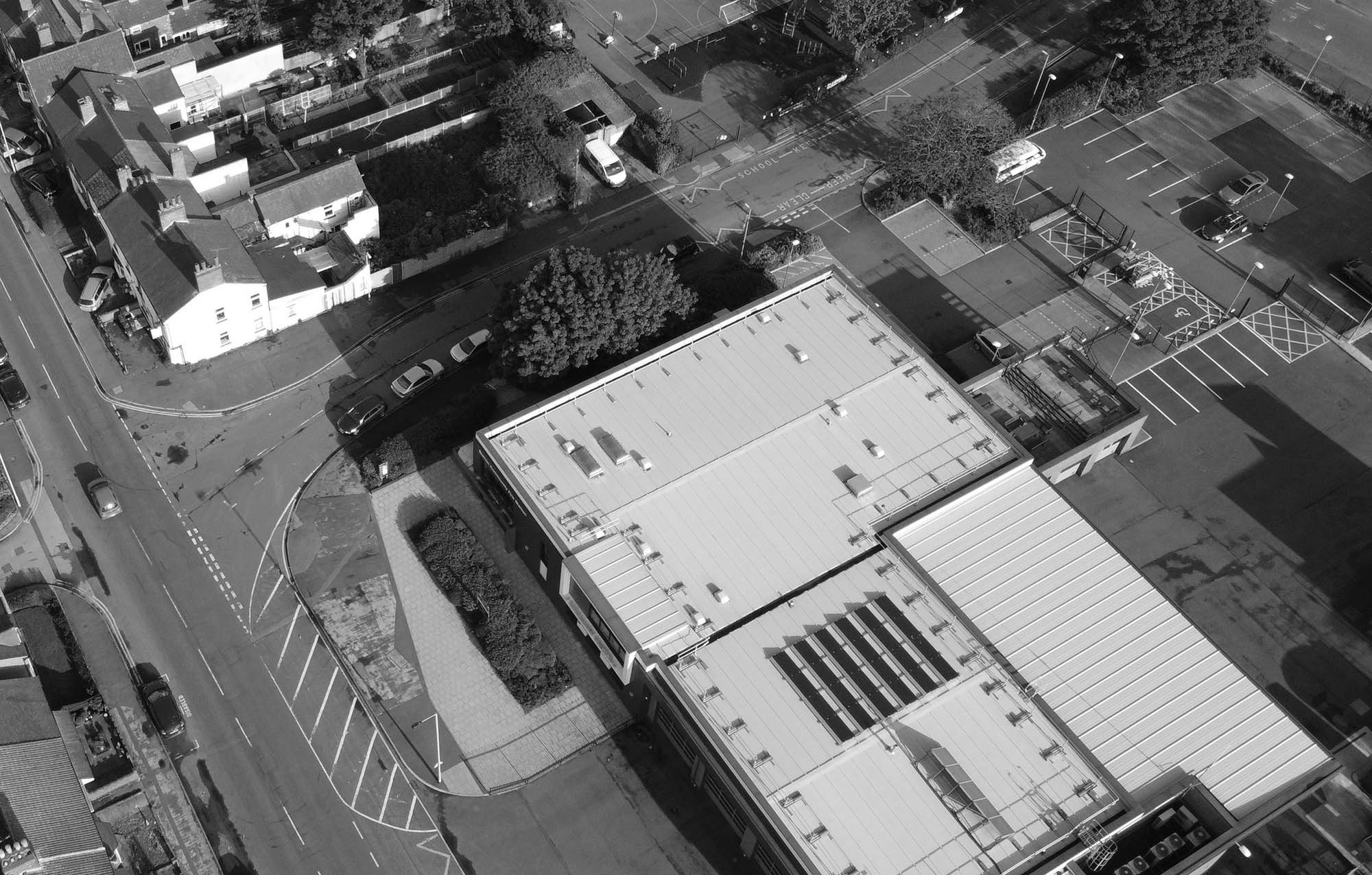
The police said to strengthen the identification they also took a statement from a woman in Swadlincote, Derbyshire who also knew him well by the given names. It was stated that after having been given several names for him by the woman, the police determined that he was identical with a coloured soldier that had been in the 3264 Quartermasters Services, US Army. He had escaped from US military custody in November 1944 and was at that time still in a state of desertion.
In the meantime, the inquest into the death of Brinley Booth returned a verdict of murder against the coloured soldier.
It was further noted that the woman said that after the coloured soldier left her house that he told her that he was going to the other woman's house in Swadlincote who knew him and it was later found that he in fact did go there but that he didn't stay there
The police then made contact with US Army Agents at the Provost Headquarters in Southampton, Marseilles and Paris and his description was circulated throughout the United Kingdom, but no trace of him was made until 1956 when he was arrested in Isle of Mann.
The police made efforts to find the murder weapon, but never found it. They said that they thought that he had probably thrown it in the River Trent as he ran off. The police said that it was not definitely known what type of weapon was used to inflict the injury to Brinley Booth, but said that the post-mortem revealed that it had pierced his brain to a depth of two inches.
The coloured soldier was later arrested on 2 September 1956 at Ramsey on the Isle of Man where he was staying with the same woman that he had been living with in Burton-on-Trent at 194 Heath Road.
It was noted that over the years, the police had searched for the coloured soldier in British Guiana and French Indo-China as well as amongst the ranks of the Foreign Legion, and that it was understood that he had, however, been living in Britain since 1946 at Nottingham, Ashby, Leicester and Liverpool.
He was taken to Burton-on-Trent where he was charged with the murder of Brinley Booth and made a statement which was described as being tantamount to an admission to having caused Brinley Booth's injuries. He said that he an unknown man broke into the cinema and that he was with the unknown man when the unknown man inflicted the injury on Brinley Booth. He also said, 'I really didn't mean to do the policeman any harm and that is the God's truth'.
The police report stated that the coloured soldier was questioned over the other man but could only say that he had fair hair and was about his own age, adding that he didn't know his name and had only met him on three occasions. However, the police report stated that 'This man is undoubtedly a figment of his imagination'.
When the coloured soldier was question in court over the other man he said, 'He used to come round the camp at Lichfield selling whisky to the fellows. I met him once or twice and bought whisky from him. I never knew his name. I don't know where he comes from. He was around 35, about my height, and was fair-haired. It said in the newspaper at the time you were looking for him'.
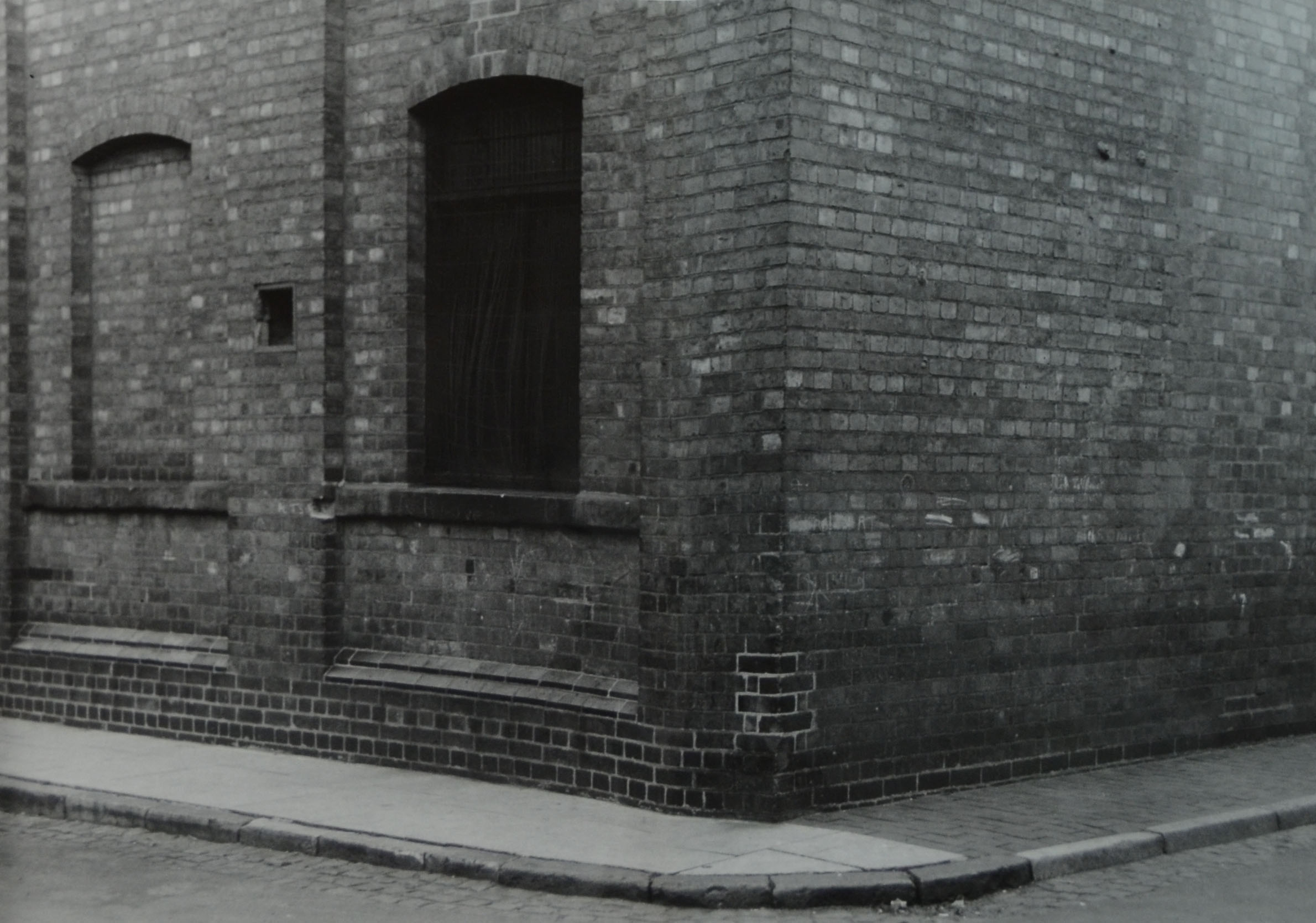
The police report stated that there was no doubt that the woman had been associating with the coloured soldier for some years although she denied it and said that she was visited by him first in 1953 when she was living in Nottingham and that he had since lived with her from time to time.
However, the police report stated that when they spoke to her son, who had been eight-years-old at the time of the murder, he said that that the coloured soldier had visited his mother frequently after she left Burton-on-Trent for Nottingham in 1946.
The police report noted that by the time of the coloured soldiers arrest, two of the witnesses were dead, the detective chief superintendent had been seconded for service in Cyprus, another police constable had resigned the force and had gone to live in Australia and that another detective sergeant had retired and gone to live in the Channel Islands.
In communication with the United States Authorities the police received a letter from the headquarters of the Third Air Force of the United States Air Force that read, :
'Because of the extremely serious nature of this offense, the United states regards this case as being of particular importance and is desirous of trying this soldier by Court-martial. It is recognised that this alleged offense is cognizable under Article VII, Section 3(b) of the NATO Status of Forces Agreement under which you have the primary right to exercise jurisdiction. However, this offense is also a very serious violation of United States military law. An accused convicted of this offense would be subject to receiving the death penalty'.
However, the United Kingdom authorities did not waive their right and the coloured soldier, who was then 37 years old, was tried at the Staffordshire Assizes in November 1956, but was acquitted on 29 November 1956.
The court heard that Brinley Booth had described the man that had attacked him whilst he was in hospital as a fair-haired man wearing a light-grey suit, whilst the statements of the witness's that had seen the coloured soldier on the night of the murder had described him as being coloured and wearing a dark green, knee length jacket, and his defence said that the coloured soldier could not have possibly been the man described by Brinley Booth.
When the judge summed up he noted that the defence had not minced words when she had said that the police had lied about a confession that the coloured soldier was said to have made stating that he had struck Brinley Booth, a claim that the coloured soldier denied, stating that the false passages referred to in the confession had been inserted after he had signed and were not there when he did sign, noting that he was unable to read. The judge added that the coloured soldier had also stated that he had been with another fair-haired man on the night of the murder, admitting that he had been concerned with the man over the theft of the safe but that when he had seen Brinley Booth chasing the other fair-haired man he had run away and had not heard about the attack until the following day.
The judge added that it was the contention of the police that the fair-haired man had in fact never existed.
The judge added that it had been argued that the prosecution based its case almost entirely on that signed statement.
The judge then addressed the jury and told them to disregard the coloured man's statement entirely if they considered that it had been given by him involuntarily or had been induced through threats and said that they had the choice of believing the coloured man or the two detectives.
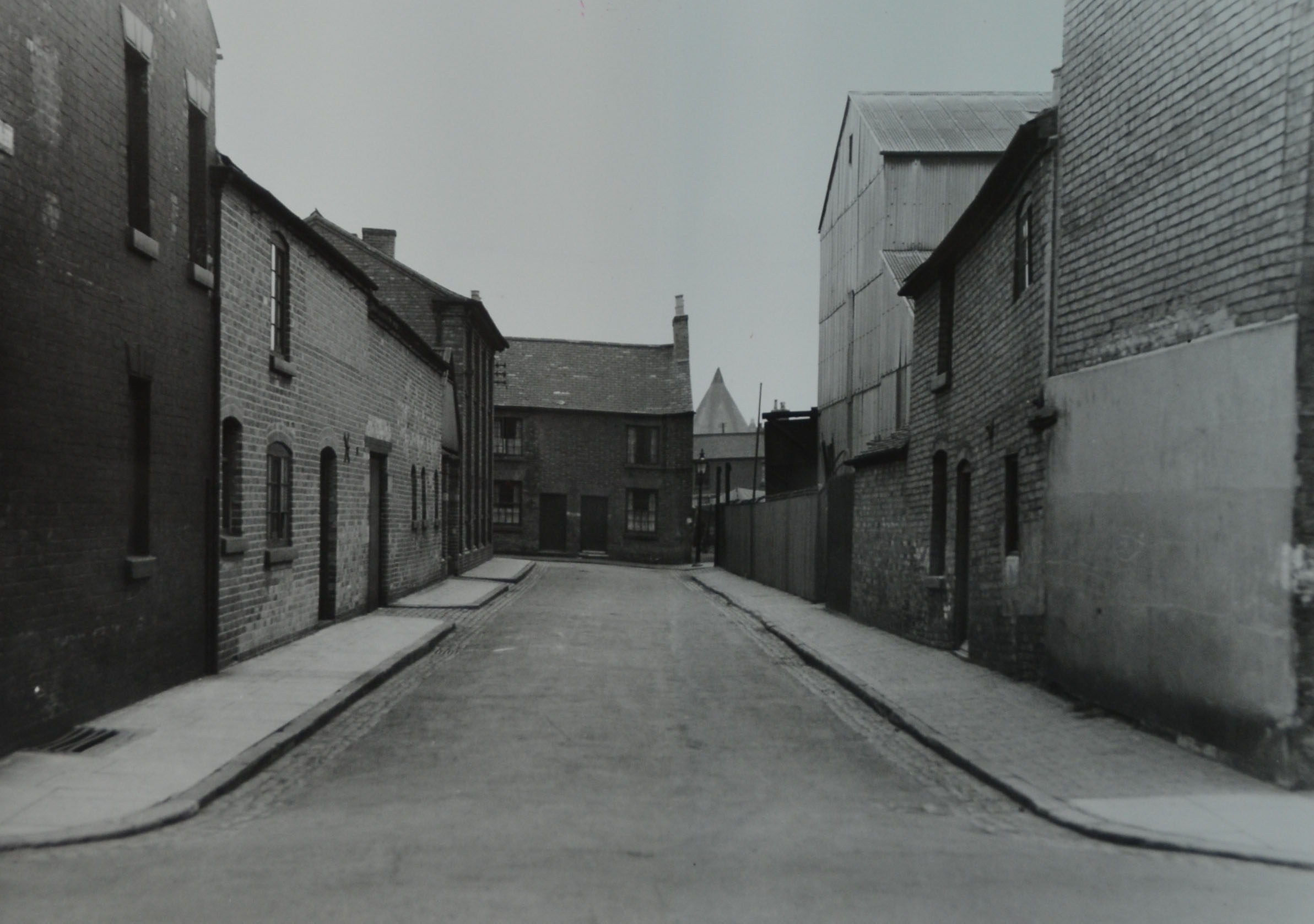
When the verdict was announced, he coloured soldier smiled and immediately left the dock and walked out of the courtroom. However, as he reached the entrance to the court building, three US Air Force military police arrested him and after handcuffing him, took him away in a car.
His court martial took place at Bushey Hall in Hertfordshire on 7 January 1957 where he was charged with desertion from the American Army. He was charged with deserting from Detachment 44, Ground Forces Redistribution Station, 10th Replacement Depot at Lichfield Staffordshire from November 1944 until his arrest in September 1956 and was found guilty and sentenced to twenty years hard labour.
When the sentence was read out, the woman that he had been living with in Burton-on-Trent and later in Nottingham, Liverpool and the Isle of Mann sat in the court crying. She later said that she was considering moving to the United States with their children so that they could be near him.
A man that appeared for the coloured soldier said, 'It was not a case of a lost week-end, but of a lost decade'. His defence said, 'There was no evidence that he intended to stay away from the United States permanently. He originally left to collect some money and got involved in something which became a nightmare he thought he could dodge apprehension for as long as he could, but that does not in itself make him guilty of desertion'. His defence also described him as 'a bit of flotsam riding the human sea’ and added that his partner had stood by him indicating that he had some worth, stating, 'She has visited him every week during his incarceration. To have someone stand by you like that shows there is something worthwhile in this man. To stand by him throughout a murder trial, to believe in his innocence, shows he has some worth'.
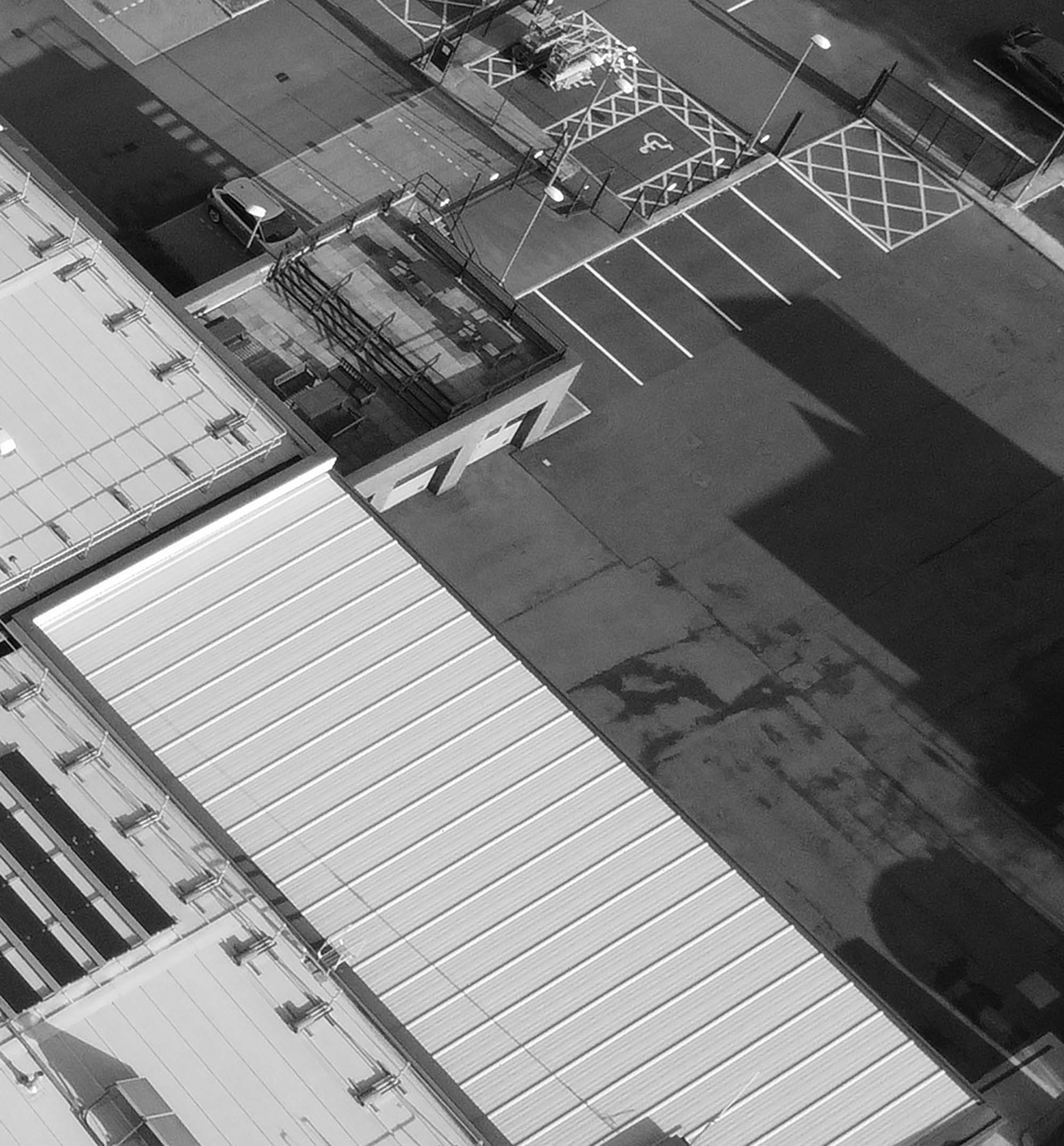
see discovery.nationalarchives.co.uk
see National Archives - ASSI 6/128, DPP 2/1532, ASSI 89/39
see GMIC
see Staffordshire Archives - C/PC/12/19/1604
see Birmingham Daily Post - Friday 30 November 1956, P6, 41
see Birmingham Daily Gazette - Friday 30 November 1956
see Birmingham Daily Post - Tuesday 08 January 1957
see Coventry Evening Telegraph - Thursday 29 November 1956
see Coventry Evening Telegraph - Friday 07 December 1956